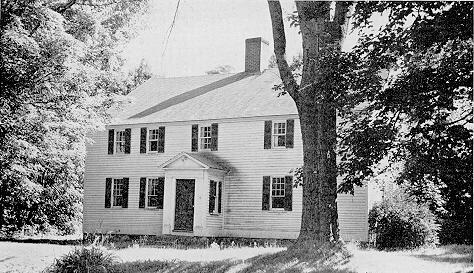Hampton's 325th Anniversary, 1638 - 1963

the oldest frame house in New Hampshrire.
by James W. Tucker
The first Hampton settlement was not, in all probability, a colony of log cabins; neither was the first church constructed of logs. The first homes in Plymouth were turfed-over dugout huts, but they were soon replaced by frame structures. Winnacunnet, as Hampton originally was called, built nearly two decades after Plymouth, probably escaped the short era of primitive huts and its earliest homes must have been of frame construction.
"Contrary to popular legend, the log cabin was not the earliest shelter of the first English settlers on the American continent. The turfed-over dugout hut of mud-chinked saplings, not unlike the Indian wigwam with the addition of a clay-daubed wooden chimney at one end, was probably the first home of the settlers in both Jamestown and Plymouth.
"These primitive dwellings were speedily replaced by frame structures, copying the traditional small house of southeast England. At first a single room in plan, flanked by a massive chimney (where brick soon replaced wood and clay), the house was later enlarged by a second room on the opposite side of the chimney. The attic, later expanded into an overhanging second story, was reached by narrow winding stairs between the central entranceway and the chimney stack.
"The development in New England is well represented by such vestiges as the Capen house, Topsfield, Mass. (1683). The interior clearly reflects the structure with its massive exposed oak corner posts, girders and joists and its huge open fireplace which served as the cooking and heating center of the household. Inside walls were usually of undecorated lath and plaster, covering the studs and their clay or brick filling. Room partitions and the face of the fireplace wall were sheathed with horizontal or vertical boarding, frequently featheredged or moulded.
"Windows were small and originally of casement type with small leaded panes in a wood frame. Small windows with low ceilings were needed to conserve heat in the severe winters. Floors of wide riven boards of pine, smoothed and sanded, replaced the beaten clay of the first shelters.
"The furniture, with few exceptions, was simple and sparce. Though strictly utilitarian, it reflected a desire for decorative warmth and dignity in its simplified carved and turned ornament and touches of earthly colors."
Perhaps the above word-picture will give all of us a better idea concerning the appearance of our town after it was first settled in 1638.
